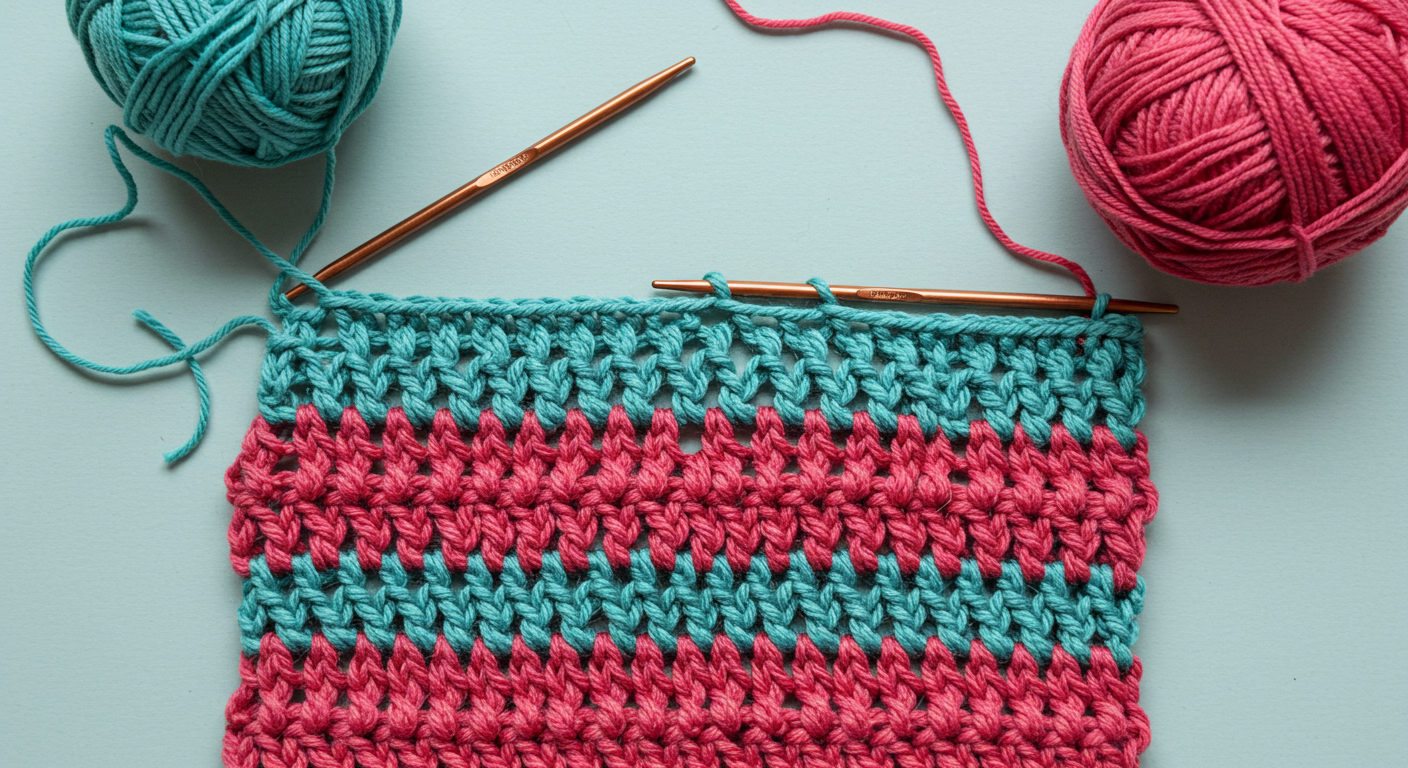DTR crochet, short for double treble crochet, is one of the tallest basic crochet stitches. It creates long, airy stitches that are perfect for lacy textures, openwork patterns, and dramatic drape in garments and accessories.
While it’s not as commonly used as single, half-double, or double crochet, the DTR crochet stitch has its place in advanced pattern design and decorative work.
How to Make the DTR Crochet Stitch
If you’re already familiar with basic stitches like single and double crochet, learning DTR crochet is just a few steps away.
Step-by-Step Instructions:
-
Yarn Over Three Times
Before inserting your hook, yarn over three times. This is what makes it a double treble stitch. -
Insert the Hook
Insert your hook into the next stitch or space in your row. -
Yarn Over and Pull Through
Pull up a loop — you now have five loops on the hook. -
Work Off the Loops
Yarn over and pull through two loops at a time, four times in total, until only one loop remains on the hook.
And that’s it — you’ve completed a DTR crochet stitch!
Where to Use DTR Crochet in Projects
The height and openness of the DTR stitch make it ideal for certain styles of patterns and textures.
1. Lace and Openwork Designs
Because of the extra height, DTR crochet stitches create long gaps and are often used in lacework, shawls, and beach cover-ups. You can combine it with chain spaces and picots for a breezy, lightweight design.
2. Texture in Garments
Use DTR crochet for dramatic rows or as part of a mixed-stitch pattern in sweaters and scarves. It adds visual interest and works well when paired with shorter stitches.
3. Edging and Borders
Adding a border in DTR crochet gives a decorative flair. It’s often used for statement edges on blankets, doilies, and handmade accessories.
Common Mistakes to Avoid
When working with DTR, tension and counting are key. Here’s how to avoid the most common pitfalls:
-
Too Much Slack
If your loops are too loose, the stitches can look sloppy. Maintain even tension to ensure clean rows. -
Skipping the Turning Chain
DTR requires a five-chain turning chain at the beginning of a row. Forgetting this can throw off stitch height and alignment. -
Gaps Between Stitches
Expect more spacing due to stitch height, but combining with shorter stitches can help tighten the design if needed.
Abbreviation and Symbol in Patterns
In crochet patterns, DTR is usually abbreviated as “dtr” in the U.S. (Double Treble Crochet). It may also appear as:
-
UK equivalent: Triple Treble Crochet (trtr)
-
Symbol: A long vertical line with three slashes through it (used in stitch diagrams)
Always check the pattern notes to confirm whether you’re using U.S. or U.K. terminology, as DTR crochet means different things depending on the region.
DTR Crochet in Pattern Examples
To help you practice, here are a few simple ways to include DTR in your next project:
1. DTR Mesh Stitch
Alternate DTR stitches with chains to create a net-like fabric. Great for market bags or light wraps
2. Vertical Stripe Blanket
Use rows of crochet mixed with single or half-double crochet to create textured striping effects. The tall DTR rows contrast beautifully with tighter rows.
3. Statement Tassel Scarves
End each row with a DTR fringe stitch and let it hang naturally to create a flowing tassel effect without extra finishing steps.
Tips for Working with DTR Crochet
-
Use Lighter Yarn
Heavier yarn with tall stitches can make a piece bulky and floppy. Use light or medium-weight yarns for best results. -
Count Your Loops
You should always pull through two loops four times. Practice the motion to avoid dropping loops mid-stitch. -
Block Your Projects
DTR crochet creates a loose structure. Steam or wet blocking helps define the stitch and maintain shape.
DTR Crochet for Advanced Stitch Combinations
Once you’re comfortable with crochet, try combining it with other tall stitches like triple treble (ttr) or extended double crochet (edc). It’s also a key element in certain specialty stitches like:
-
Crocodile stitch scales
-
Broomstick lace
-
Shells with extended height
This makes DTR crochet not only useful but also creatively versatile in advanced pattern designs.
Final Thoughts
The DTR crochet stitch may not be used in every project, but it’s a powerful technique to have in your toolkit. It adds height, drama, and openness to your crochet work and pairs beautifully with lacy, modern, or high-texture designs.
Whether you’re making elegant shawls, unique blankets, or detailed trims, mastering DTR opens new creative doors. Don’t be intimidated by its length—once you practice the flow, it becomes a smooth and rhythmic stitch to work with.
